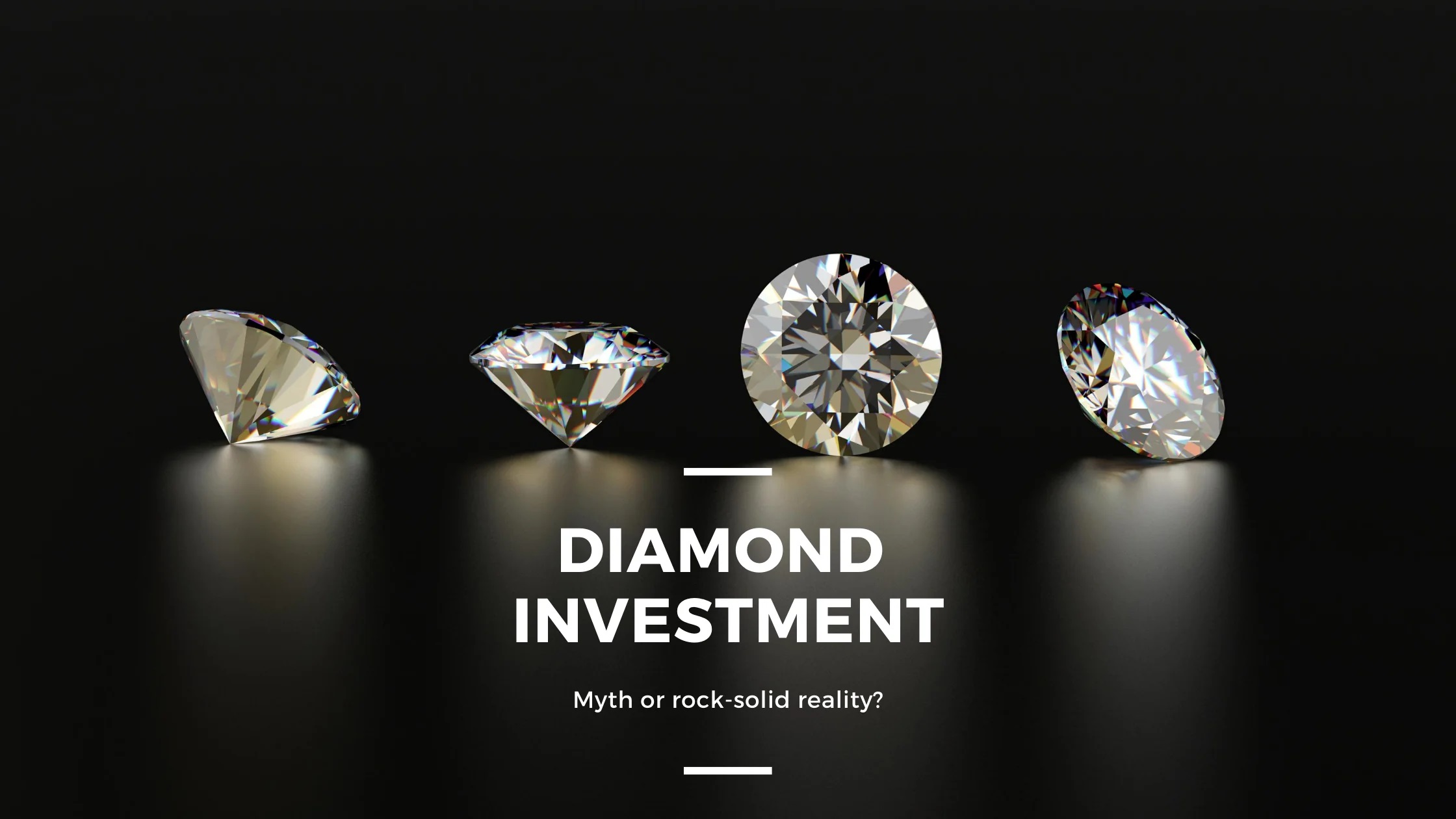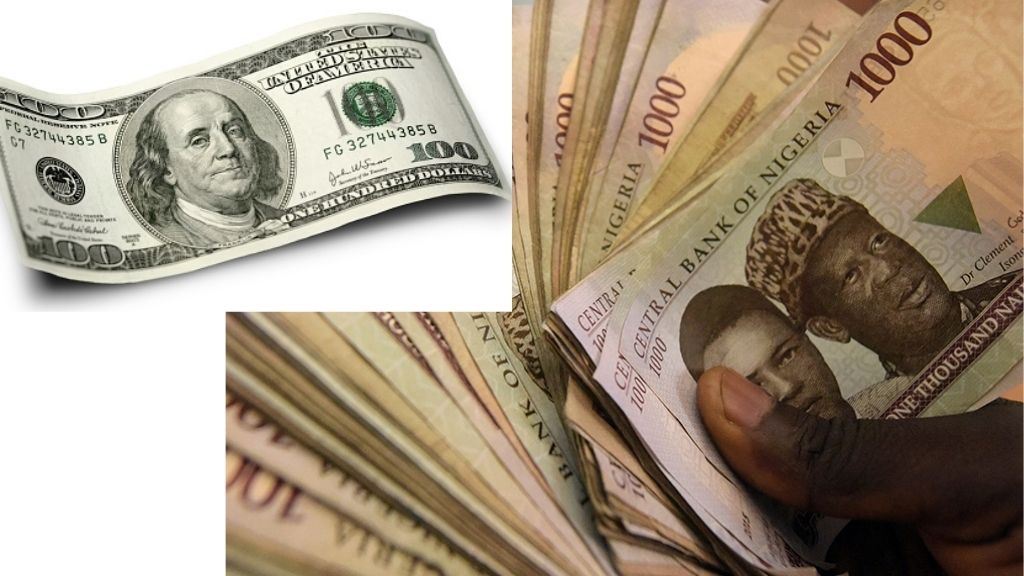Economy
Should I Invest in Diamond Jewelry?

Jewelry made of diamonds has long been seen as a representation of class, wealth, and unfading beauty. Many people are enticed by the idea of owning exquisite diamond pieces, whether it’s on a sparkling engagement ring or a dazzling necklace.
However, when it comes to investing in diamond jewelry, one might wonder if it is a wise financial decision. It is crucial to comprehend the variables that affect diamond jewelry’s worth before adopting it as a form of investment.
This article will answer the question, “Should I invest in diamond jewelry” by stating why you should buy diamond jewelry, and the reasons why investing in diamond jewelry is a good idea.
Additionally, this post will discuss the factors influencing the investment value of diamond jewelry, the risks associated with investing in diamond jewelry, and the things to do before investing in diamond jewelry, to enable you to make an informed decision.
Let’s dive into the details right away!
Why Buy Diamond Jewelry?
Buying diamond jewelry is a good investment because diamonds have a timeless appeal that makes them highly sought after in the world of jewelry. Their exquisite beauty, durability, and rarity contribute to their high value. Owning diamond jewelry allows you to enjoy not only the aesthetic pleasure it brings but also the potential investment returns it may offer.
Diamonds are considered a store of value and have historically held their worth over time. Unlike other luxury goods that may depreciate, well-maintained and high-quality diamond jewelry can retain or even appreciate.
Reasons Why You Should Invest in Diamond Jewelry
Here are several compelling reasons why diamond jewelry is an attractive investment option:
-
Diamond jewelry pieces are tangible and portable assets
Diamond jewelry is a tangible asset that you can physically possess and enjoy. Unlike other forms of investments that exist solely on paper or in digital form, diamond jewelry provides a sense of ownership and can be easily transported.
Check this catalog of mensweddingbands for a list of men’s wedding rings with gem engravings – like diamonds, which you can use for your engagement or wedding.
-
Diamond jewelry has a long-term value
Diamond jewelry has shown a history of long-term value appreciation. Over time, high-quality diamond jewelry has the potential to increase in value, especially those that possess exceptional characteristics such as large carat size, excellent cut, clarity, color, and unique designs.
-
High demand and desirability of diamond jewelry
Diamonds have a universal appeal and enduring demand. They are in demand for a variety of occasions, such as engagements, marriage ceremonies, anniversary celebrations, and many other events. The global demand for diamond jewelry ensures a robust market, which can positively influence the value of your investment.
-
Diamond jewelry holds emotional and sentimental value
Diamond jewelry holds emotional significance and sentimental value. People can pass it down through generations, symbolizing cherished memories, family traditions, and important milestones. The emotional value associated with diamond jewelry adds an intangible aspect that enhances its worth beyond monetary considerations.
-
Diamond jewelry pieces are rare and exclusive
The rarity and limited supply of high-quality diamond Jewelry contribute to their value. As the world’s diamond mines continue to deplete, the scarcity of these precious gemstones keeps driving up their prices.
-
Diamond jewelry is a means of wealth creation through portfolio diversification
Including diamond jewelry in your investment portfolio can contribute to diversification. Diamond jewelry is an alternative asset class that has historically exhibited a low correlation with other financial instruments such as stocks or bonds. Diversifying your investment by investing in diamond jewelry can help you to reduce risk and potentially enhance overall portfolio performance.
-
For personal pleasure
Unlike many other investments, diamond jewelry offers the opportunity for personal enjoyment. You can wear and showcase your investment, experiencing the beauty, elegance, and sophistication of diamonds firsthand.
Factors Influencing the Investment Value of Diamond Jewelry
Here are several key factors that influence the investment value of diamond jewelry;
Diamond scarcity
The rarity and scarcity of certain diamonds can drive up the value of diamond jewelry. Diamond jewelry pieces that possess exceptional qualities, such as large diamond carat sizes, flawless clarity, and vivid colors, are often highly sought after by collectors and investors.
Quality and craftsmanship of the diamond jewelry
The quality of a diamond, including its cut, clarity, color, and carat weight, plays a crucial role in determining the value of diamond jewelry. Additionally, the craftsmanship of the jewelry piece itself, including the design and setting, can enhance its desirability and worth.
Historical significance and provenance of the diamond jewelry
Diamond jewelry with historical significance or a notable provenance can hold significant value. Jewelry pieces worn by celebrities, royalties, or associated with important events often command higher prices due to their unique stories and cultural relevance.
Risks Involved in Investing in Diamond Jewelry
Even though diamond jewelry gives a good ROI (Return on Investment), it is vital to be aware of the risks involved in investing in them. Mentioned below are some of these risks:
The volatility of diamond jewelry prices
One risk involved in investing in diamond jewelry is price volatility. Due to a variety of circumstances, such as shifting dynamics between supply and demand, the state of the economy, and the market condition, the price of diamond jewelry might fluctuate. Bear that in mind before buying diamond jewelry for investment purposes.
Illiquidity and resale challenges
Compared to other investment assets, diamond jewelry can be relatively illiquid. Finding a buyer at the desired price and time may prove challenging. Additionally, the resale value of diamond jewelry may be lower than the original purchase price due to factors such as market conditions and changing consumer preferences.
Counterfeit diamond jewelry
The presence of counterfeit diamond jewelry in the market poses a risk to buyers. It is essential to purchase diamond jewelry from reputable sources and ensure proper certification to authenticate the diamonds’ quality and origin.
Steps to Take Before Buying Diamond Jewelry
To make an informed decision about investing in diamond jewelry, consider the following steps:
-
Consult with diamond jewelry experts
Seek guidance from reputable jewelers, gemologists, or financial advisors who specialize in diamond jewelry investments. Their knowledge can assist you in navigating the market’s complexity and selecting diamond jewelry wisely.
-
Conduct independent study and self-education
Take the time to educate yourself about diamond jewelry, its grading standards (4Cs), market trends, and the factors influencing its value. You can make more beneficial choices when purchasing diamond jewelry if you are well-informed and did your homework.
-
Create a spending budget
Come up with a spending budget that is in line with your financial objectives and risk tolerance. Determine the amount you are willing to invest in diamond jewelry without jeopardizing your overall financial well-being.
-
Establish personal preferences
Consider your or your partner’s (if you’re buying for her) personal preferences when selecting diamond jewelry. Investing in diamond jewelry that you genuinely appreciate and enjoy wearing can provide added value beyond financial returns.
FAQ
Can I sell diamond jewelry at a profit?
It is possible to sell diamond jewelry at a profit, but the resale value may be influenced by factors such as market conditions, the quality of the diamond on the jewelry, and consumer preferences. The timing and circumstances of the sale can also impact the potential profit.
Conclusion
Investing in diamond jewelry can be an alluring prospect, combining beauty, emotional value, and potential financial gains. However, it is crucial to approach diamond jewelry investments with careful consideration, research, and expert guidance.
By understanding the market dynamics, evaluating the quality and rarity of diamond jewelry, and assessing potential risks, you can make an informed decision when you want to invest in diamond jewelry.
Economy
FAAC Disburses 1.727trn to FG, States Local Councils in December 2024

By Modupe Gbadeyanka
The federal government, the 36 states of the federation and the 774 local government areas have received N1.727 trillion from the Federal Accounts Allocation Committee (FAAC) for December 2024.
The funds were disbursed to the three tiers of government from the revenue generated by the nation in November 2024.
At the December meeting of FAAC held in Abuja, it was stated that the amount distributed comprised distributable statutory revenue of N455.354 billion, distributable Value Added Tax (VAT) revenue of N585.700 billion, Electronic Money Transfer Levy (EMTL) revenue of N15.046 billion and Exchange Difference revenue of N671.392 billion.
According to a statement signed on Friday by the Director of Press and Public Relations for FAAC, Mr Bawa Mokwa, the money generated last month was about N3.143 trillion, with N103.307 billion used for cost of collection and N1.312 trillion for transfers, interventions and refunds.
It was disclosed that gross statutory revenue of N1.827 trillion was received compared with the N1.336 trillion recorded a month earlier.
The statement said gross revenue of N628.972 billion was available from VAT versus N668.291 billion in the preceding month.
The organisation stated that last month, oil and gas royalty and CET levies recorded significant increases, while excise duty, VAT, import duty, Petroleum Profit Tax (PPT), Companies Income Tax (CIT) and EMTL decreased considerably.
As for the sharing, FAAC disclosed that from the N1.727 trillion, the central government got N581.856 billion, the states received N549.792 billion, the councils took N402.553 billion, while the benefiting states got N193.291 billion as 13 per cent derivation revenue.
From the N585.700 billion VAT earnings, the national government got N87.855 billion, the states received N292.850 billion and the local councils were given N204.995 billion.
Also, from the N455.354 billion distributable statutory revenue, the federal government was given N175.690 billion, the states got N89.113 billion, the local governments had N68.702 billion, and the benefiting states received N121.849 billion as 13 per cent derivation revenue.
In addition, from the N15.046 billion EMTL revenue, FAAC shared N2.257 billion to the federal government, disbursed N7.523 billion to the states and transferred N5.266 billion to the local councils.
Further, from the N671.392 billion Exchange Difference earnings, it gave central government N316.054 billion, the states N160.306 billion, the local government areas N123.590 billion, and the oil-producing states N71.442 billion as 13 per cent derivation revenue.
Economy
Okitipupa Plc, Two Others Lift Unlisted Securities Market by 0.65%

By Adedapo Adesanya
The NASD Over-the-Counter (OTC) Securities Exchange recorded a 0.65 per cent gain on Friday, December 13, boosted by three equities admitted on the trading platform.
On the last trading session of the week, Okitipupa Plc appreciated by N2.70 to settle at N29.74 per share versus Thursday’s closing price of N27.04 per share, FrieslandCampina Wamco Nigeria Plc added N2.49 to end the session at N42.85 per unit compared with the previous day’s N40.36 per unit, and Afriland Properties Plc gained 50 Kobo to close at N16.30 per share, in contrast to the preceding session’s N15.80 per share.
Consequently, the market capitalisation added N6.89 billion to settle at N1.062 trillion compared with the preceding day’s N1.055 trillion and the NASD Unlisted Security Index (NSI) gained 19.66 points to wrap the session at 3,032.16 points compared with 3,012.50 points recorded in the previous session.
Yesterday, the volume of securities traded by investors increased by 171.6 per cent to 1.2 million units from the 447,905 units recorded a day earlier, but the value of shares traded by the market participants declined by 19.3 per cent to N2.4 million from the N3.02 million achieved a day earlier, and the number of deals went down by 14.3 per cent to 18 deals from 21 deals.
At the close of business, Geo-Fluids Plc was the most active stock by volume on a year-to-date basis with a turnover of 1.7 billion units worth N3.9 billion, followed by Okitipupa Plc with the sale of 752.2 million units valued at N7.8 billion, and Afriland Properties Plc with 297.3 million units sold for N5.3 million.
In the same vein, Aradel Holdings Plc remained the most active stock by value on a year-to-date basis with the sale of 108.7 million units for N89.2 billion, trailed by Okitipupa Plc with 752.2 million units valued at N7.8 billion, and Afriland Properties Plc with a turnover of 297.3 million units worth N5.3 billion.
Economy
Naira Trades N1,533/$1 at Official Market, N1,650/$1 at Parallel Market

By Adedapo Adesanya
The Naira appreciated further against the United States Dollar at the Nigerian Autonomous Foreign Exchange Market (NAFEM) by N1.50 or 0.09 per cent to close at N1,533.00/$1 on Friday, December 13 versus the N1,534.50/$1 it was transacted on Thursday.
The local currency has continued to benefit from the Electronic Foreign Exchange Matching System (EFEMS) introduced by the Central Bank of Nigeria (CBN) this month.
The implementation of the forex system comes with diverse implications for all segments of the financial markets that deal with FX, including the rebound in the value of the Naira across markets.
The system instantly reflects data on all FX transactions conducted in the interbank market and approved by the CBN.
Market analysts say the publication of real-time prices and buy-sell orders data from this system has lent support to the Naira in the official market and tackled speculation.
In the official market yesterday, the domestic currency improved its value against the Pound Sterling by N12.58 to wrap the session at N1,942.19/£1 compared with the previous day’s N1,954.77/£1 and against the Euro, it gained N2.44 to close at N1,612.85/€1 versus Thursday’s closing price of N1,610.41/€1.
At the black market, the Nigerian Naira appreciated against the greenback on Friday by N30 to sell for N1,650/$1 compared with the preceding session’s value of N1,680/$1.
Meanwhile, the cryptocurrency market was largely positive as investors banked on recent signals, including fresh support from US President-elect, Mr Donald Trump, as well as interest rate cuts by the European Central Bank (ECB).
Ripple (XRP) added 7.3 per cent to sell at $2.49, Binance Coin (BNB) rose by 3.5 per cent to $728.28, Cardano (ADA) expanded by 2.4 per cent to trade at $1.11, Litecoin (LTC) increased by 2.3 per cent to $122.56, Bitcoin (BTC) gained 1.9 per cent to settle at $101,766.17, Dogecoin (DOGE) jumped by 1.2 per cent to $0.4064, Solana (SOL) soared by 0.7 per cent to $226.15 and Ethereum (ETH) advanced by 0.6 per cent to $3,925.35, while the US Dollar Tether (USDT) and the US Dollar Coin (USDC) remained unchanged at $1.00 each.
-

 Feature/OPED5 years ago
Feature/OPED5 years agoDavos was Different this year
-
Travel/Tourism8 years ago
Lagos Seals Western Lodge Hotel In Ikorodu
-

 Showbiz2 years ago
Showbiz2 years agoEstranged Lover Releases Videos of Empress Njamah Bathing
-

 Banking6 years ago
Banking6 years agoSort Codes of GTBank Branches in Nigeria
-

 Economy2 years ago
Economy2 years agoSubsidy Removal: CNG at N130 Per Litre Cheaper Than Petrol—IPMAN
-

 Banking2 years ago
Banking2 years agoFirst Bank Announces Planned Downtime
-

 Sports2 years ago
Sports2 years agoHighest Paid Nigerian Footballer – How Much Do Nigerian Footballers Earn
-

 Technology4 years ago
Technology4 years agoHow To Link Your MTN, Airtel, Glo, 9mobile Lines to NIN










